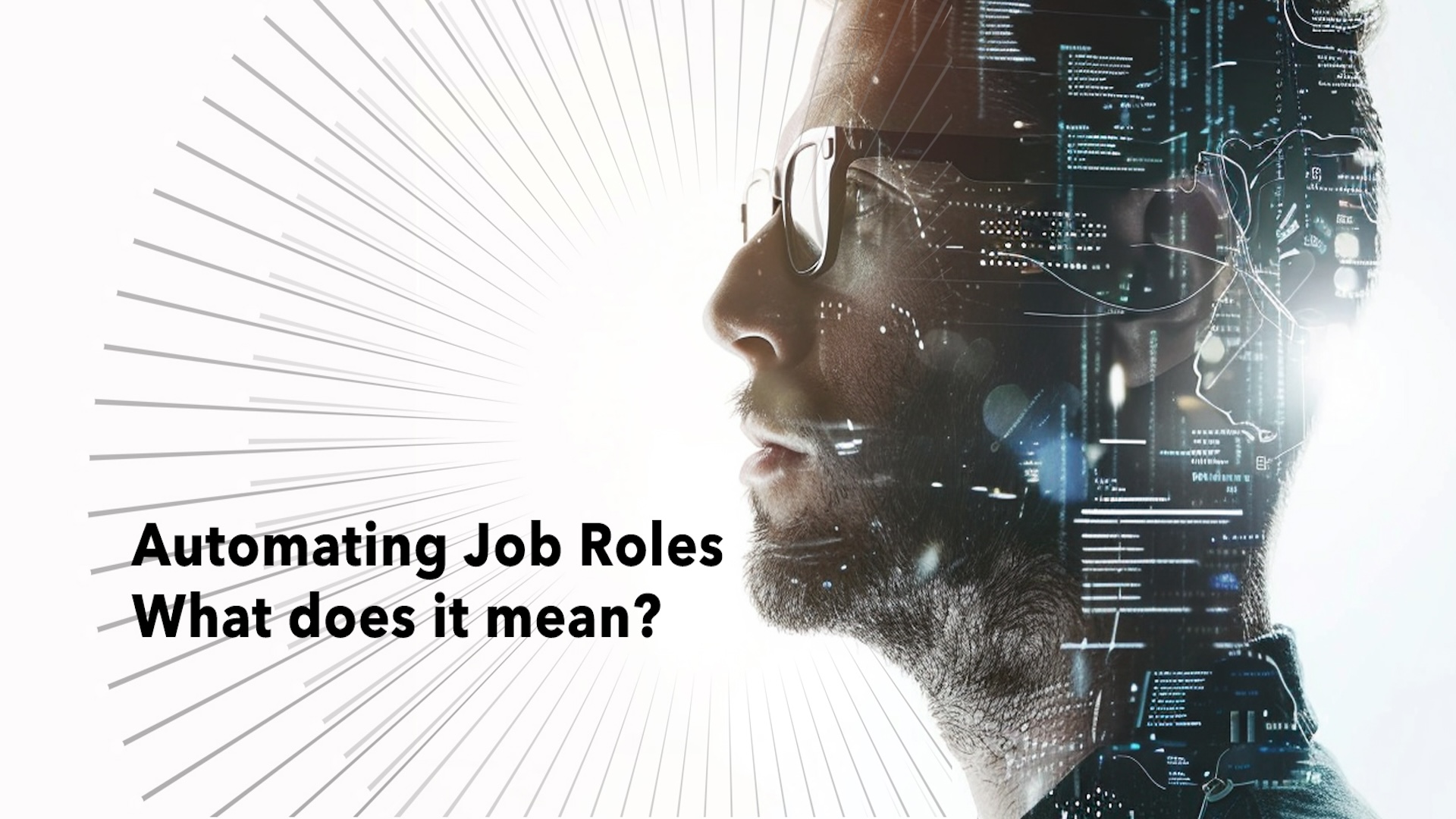Automating Job Roles – What Does It Mean?
Automating job roles with AI means handing over tasks traditionally performed by people—such as analyzing market trends, creating strategic plans, or overseeing complex projects—to an intelligent system that can learn and improve over time. By letting AI take care of repetitive or data-heavy work, companies can boost efficiency, reduce costs, and unlock faster innovation. At the same time, they enable human professionals to devote more energy to creativity, strategic thinking, and relationship-building.
Process Automation vs. Job Role Automation
What is Process Automation?
Process automation and job role automation share a common goal—streamlining tasks and improving efficiency. Process automation typically zeroes in on a specific, repeatable set of steps, like invoicing or onboarding new employees. By mapping out these steps and creating a workflow, businesses can automate routine tasks with relative ease, often relying on rule-based software or simple algorithms.
What is Job Role Automation?
Job role automation, on the other hand, takes a broader approach. A job role—like that of a business analyst—encompasses a wide range of processes, tasks, and responsibilities. Beyond simply completing data entry or generating a weekly report, an analyst might be asked to perform market research, evaluate complex financial models, or interpret competitor performance. Automating such roles requires advanced AI capable of handling varied inputs and learning from multiple types of data.
Key Takeaways
- AI-Driven Workflow: Data collection, model training, evaluation, and implementation are the four main stages.
- Practical Benefits: Faster decision-making, improved accuracy, and better scalability.
- Real-World Examples: Finance, healthcare, education, marketing, and consulting.
- Ethical Concerns: Bias, privacy issues, and the potential for job displacement.
- Future Outlook: Greater adoption across industries, quantum computing advancements, and new global opportunities.
How Automating Job Roles Works
AI’s Role in Automating Tasks
Think of your AI as a tireless helper, tackling both administrative work—like data entry and basic analytics—as well as more complex tasks that require in-depth examination. The process kicks off by pulling information from multiple sources, such as historical performance reports, competitor analyses, and real-time customer feedback.
Training and Implementation
As the AI absorbs more data, it refines its ability to offer valuable predictions and actionable insights. Once training is complete, the AI can handle tasks associated with business analysts, strategy consultants, or digital transformation managers.
Example
Imagine a business analyst at a financial firm who must review last quarter’s earnings and forecast next quarter’s performance. Traditionally, this would require sifting through multiple spreadsheets and databases over days or weeks. With AI, however, the data is instantly aggregated and processed to spot trends, detect anomalies, and highlight potential risks. The system then delivers a concise report with actionable insights, freeing the analyst to focus on interpreting the findings and shaping recommendations.
Applications of Automating Job Roles Across Industries
Industry-Specific Use Cases
Industry | Automated Role | Example Use Cases |
Finance | Financial Analysts, Loan Officers | AI evaluating loan applications, automating risk assessment, portfolio management |
Healthcare | Medical Data Analysts, Admin Staff | Automating patient record updates, analyzing large data sets for treatment patterns |
Education | Curriculum Planners, Tutors | Personalized learning plans, instant student feedback, automated grading |
Marketing | Marketing Strategists, SEO Specialists | AI-driven campaign management, content optimization, keyword analytics |
Consulting | Strategy Consultants, Business Analysts | Automated market research, scenario planning, competitor analysis |
Why Does This Matter?
- Speed: AI handles large volumes of data at breakneck speed.
- Consistency: Automation fosters uniform reporting and lowers human error rates.
- Resource Optimization: Human professionals focus on tasks that truly need creativity or complex judgment.
Benefits of Automating Job Roles
Advantages for Organizations
- Efficiency: AI doesn’t need breaks or sleep, allowing it to process tasks continuously.
- Accuracy: By following strict rules, an AI system minimizes the slip-ups that occur with manual work.
- Scalability: As workloads grow, AI can be scaled up simply by adding computing power.
- Improved Decision-Making: Many AI tools provide real-time insights for better strategies.
Ethical Considerations
Addressing Key Concerns
- Bias: If the AI’s training data is skewed, it may reinforce existing prejudices.
- Data Privacy: Robust protocols are needed to safeguard personal data.
- Job Displacement: Automation could replace some roles while creating new opportunities.
- Accountability: Establish clear guidelines and human oversight to manage AI-driven decisions.
The Future of Automating Job Roles
Emerging Technologies and Trends
More companies are rapidly embracing AI as costs decrease, making the technology accessible to a wider range of organizations. Quantum computing is on the horizon, offering even more sophisticated use cases.
In Summary
Automating job roles with AI can boost your organization’s efficiency, accuracy, and overall adaptability. By handing off repetitive tasks to AI, professionals can focus on creativity, problem-solving, and building relationships. While ethical concerns persist, proper planning and governance can ensure a smarter, fairer future of work.
FAQs About Automating Job Roles
What are the four stages of an AI workflow?
- Data Collection – Gathering relevant information to train the AI.
- Model Training – Using that data to teach the AI how to complete tasks or recognize patterns.
- Evaluation – Testing and refining the AI to ensure it meets quality standards.
- Implementation – Deploying the system to handle real-world tasks.
Is every job fully automatable?
No. While AI excels at structured tasks, human creativity, emotional intelligence, and judgment remain irreplaceable.
Ready to Experience the Future of Work?
Automating job roles isn’t just about efficiency—it’s about unlocking the full potential of your team. With Turbotic AI, you can streamline operations, enhance decision-making, and drive innovation faster than ever before.
Why wait? Discover the power of automation today.
Try Turbotic AI for free!





